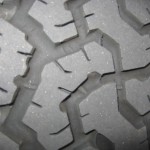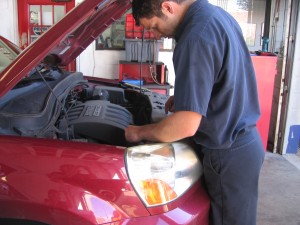Whether you are shopping for a new car or just trying to maintain the one you have, you can take some steps to get the best mileage out of your gas purchases. The Federal Trade Commission, the nation’s consumer protection agency, offers these tips to use fuel efficiently.
On the Road: Drive More Efficiently
- Stay within posted speed limits. Gas mileage decreases rapidly at speeds above 60 miles per hour.
- Stop aggressive driving. You can improve your gas mileage up to five percent around town if you avoid “jackrabbit” starts and stops by anticipating traffic conditions and driving gently.
- Avoid unnecessary idling. It wastes fuel, costs you money, and pollutes the air. Turn off the engine if you anticipate a wait.
- Combine errands. Several short trips taken from a cold start can use twice as much fuel as one trip covering the same distance when the engine is warm.
- Use overdrive gears and cruise control when appropriate. They improve the fuel economy of your car when you’re driving on a highway.
- Remove excess weight from the trunk. An extra 100 pounds in the trunk can reduce a typical car’s fuel economy by up to two percent.
- Avoid packing items on top of your car. A loaded roof rack or carrier creates wind resistance and can decrease fuel economy by five percent.
At the Garage: Maintain Your Car
- Keep your engine tuned. Tuning your engine according to your owner’s manual can increase gas mileage by an average of four percent. Increases vary depending on car’s condition.
- Keep your tires properly inflated and aligned. It can increase gas mileage up to three percent.
- Change your oil. According to the U.S. Department of Energy( DOE) and Environmental Protection Agency(EPA), you can improve your gas mileage by using the manufacturer’s recommended grade of motor oil. Motor oil that says “Energy Conserving” on the performance symbol of the American Petroleum Institute contains friction-reducing additives that can improve fuel economy.
At the Pump: Use the Octane Level Your Need
- Your owner’s manual recommends the most effective octane level for your car. For most cars, the recommended gasoline is regular octane. In most cases, using a higher octane gas than the manufacturer recommends offers no benefit. Unless your engine is knocking, buying higher octane gasoline is a waste of money.
In the Showroom: Consider the Alternatives
- Alternative Fuel Vehicles (AFVS) operate on alternative fuels, such as methanol, ethanol, compressed natural gas, liquefied petroleum gas, electricity, and other designated by the DOE. Using these alternative fuels in vehicles may reduce harmful pollutants and exhaust emissions. FTC Rules require labels on all new AFVs to give the vehicle’s estimated cruising range and general descriptive information. Find out how many miles a new AFV travels on a tank or supply of fuel because gallon for gallon, some don’t travel as far as gasoline-powered vehicles.
- Hybrid Electric Vehicles offer another option for car buyers. According to DOE And EPA, these vehicles combine the benefits of gasoline engines and electric motor and can be configured to achieve different objectives, such as improved fuel economy and increased power
For all of your Denver Auto Repair needs, trust Express Car Care. Call (303) 691-2760 or stop by our shop today.
.










